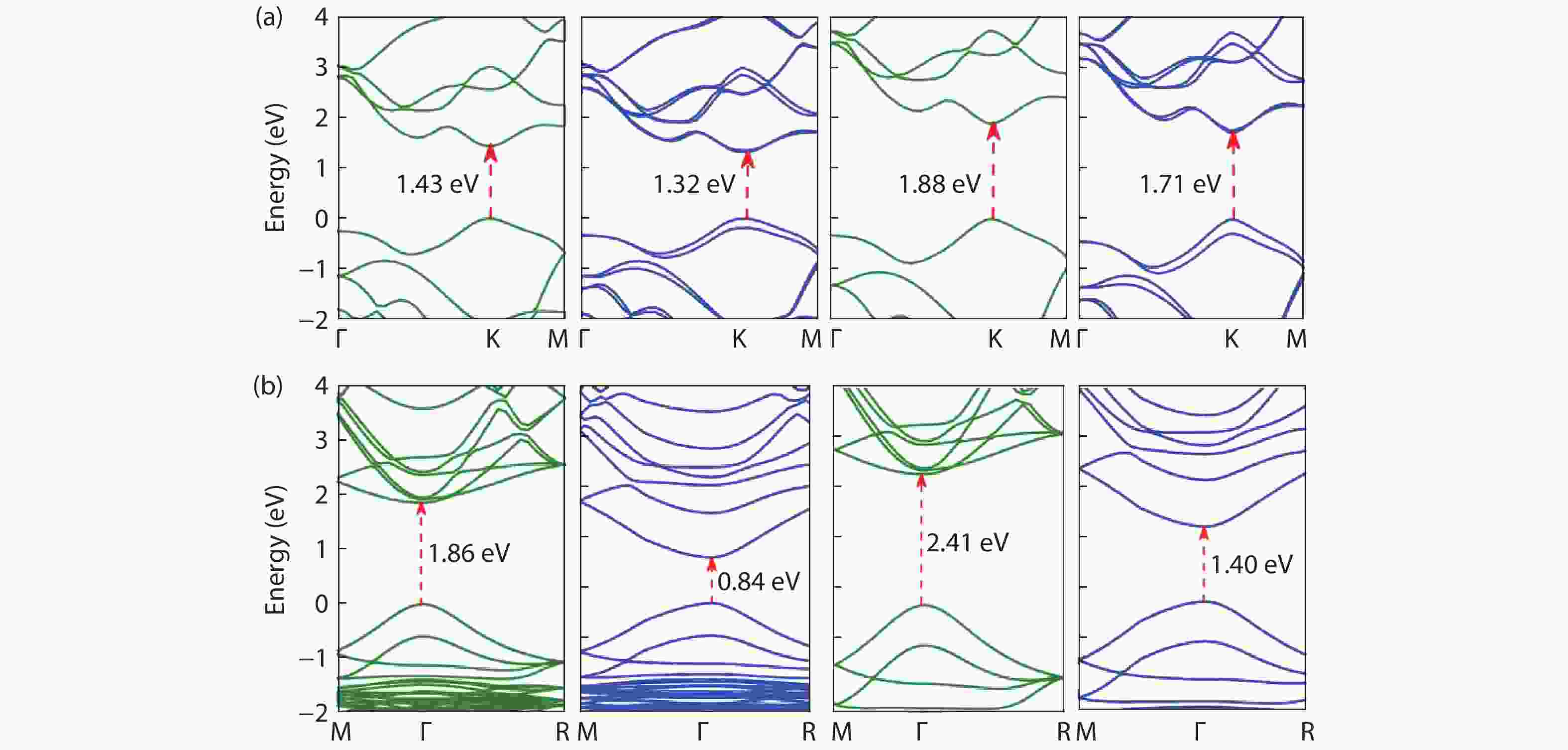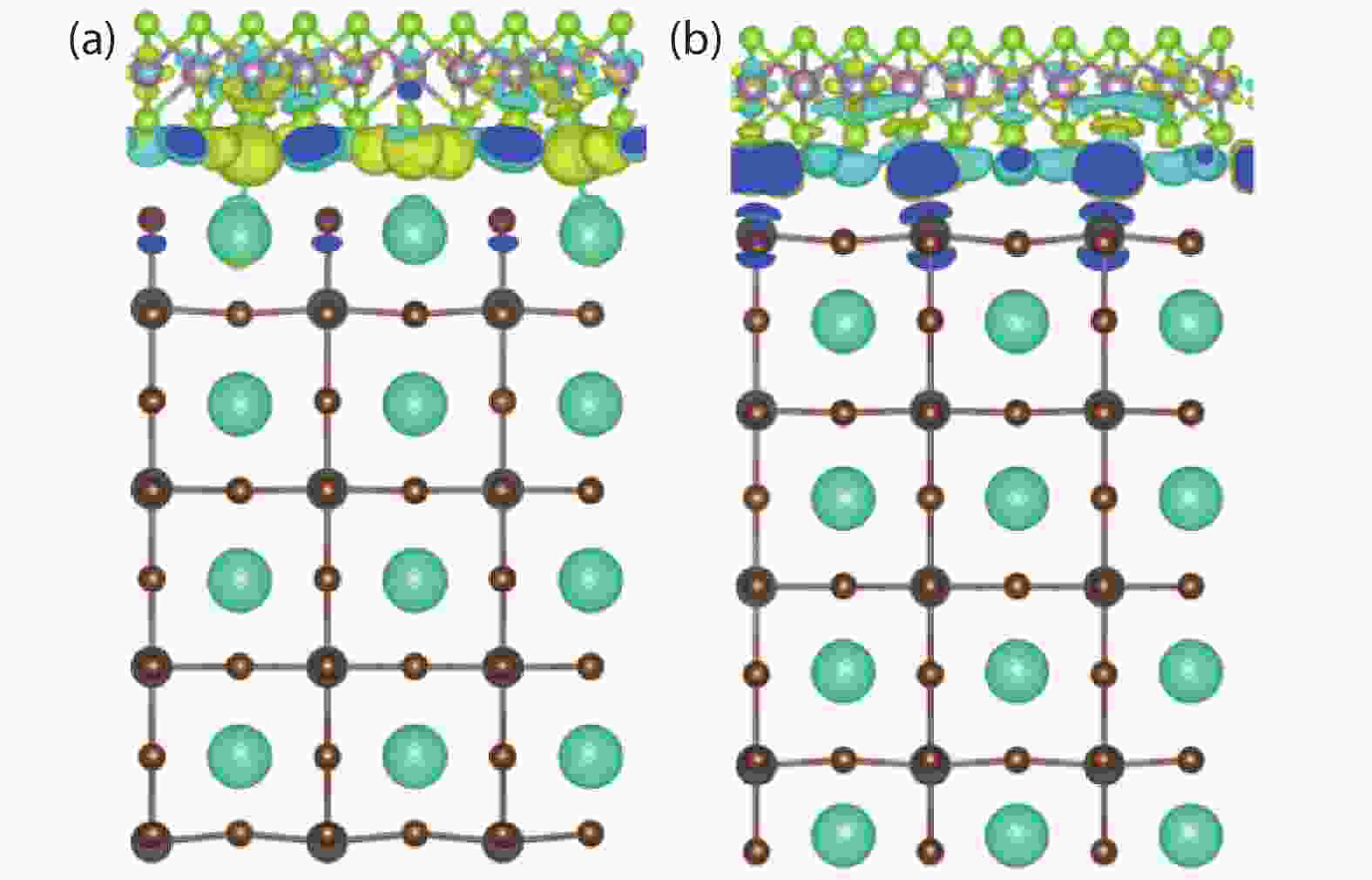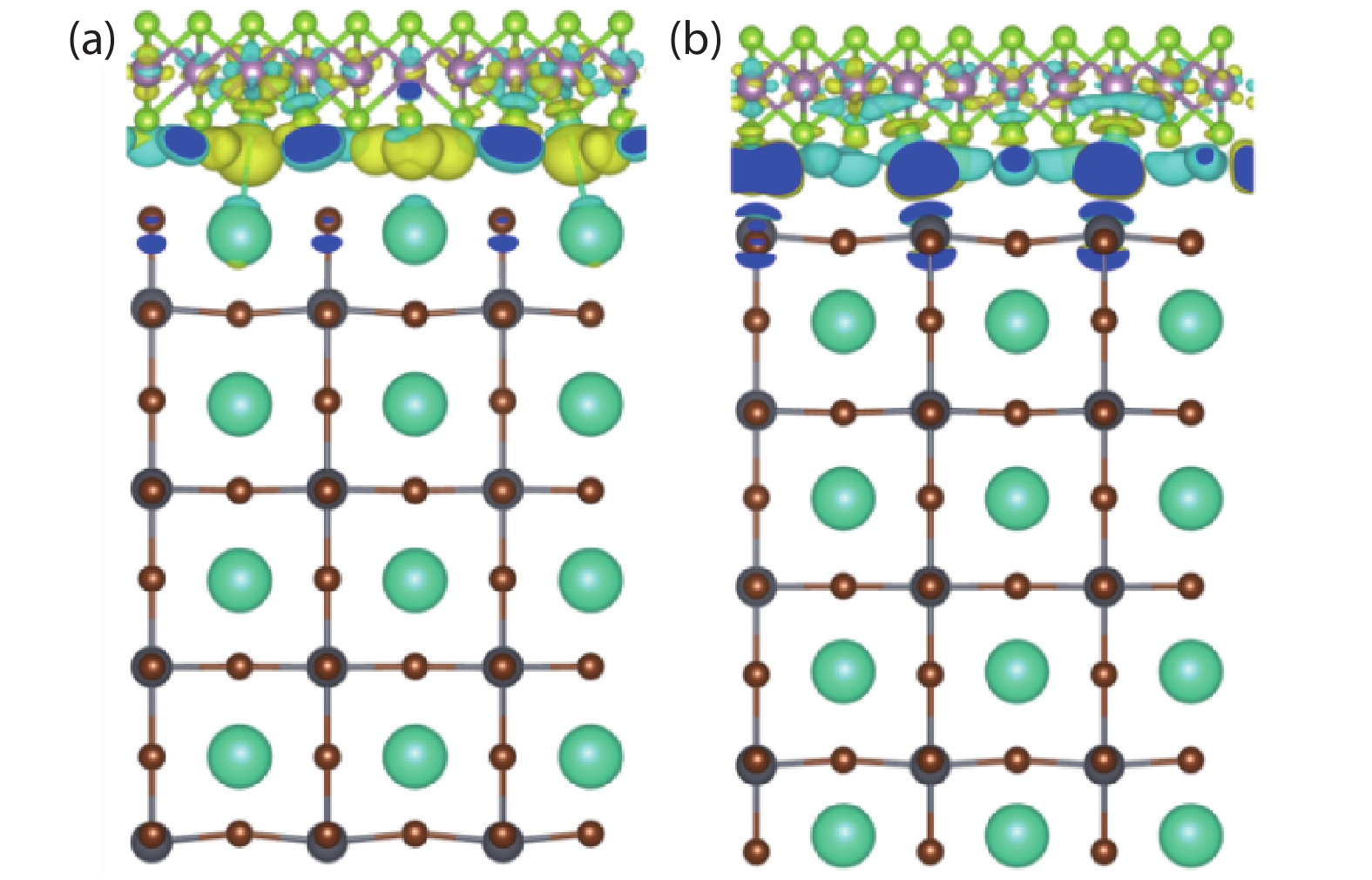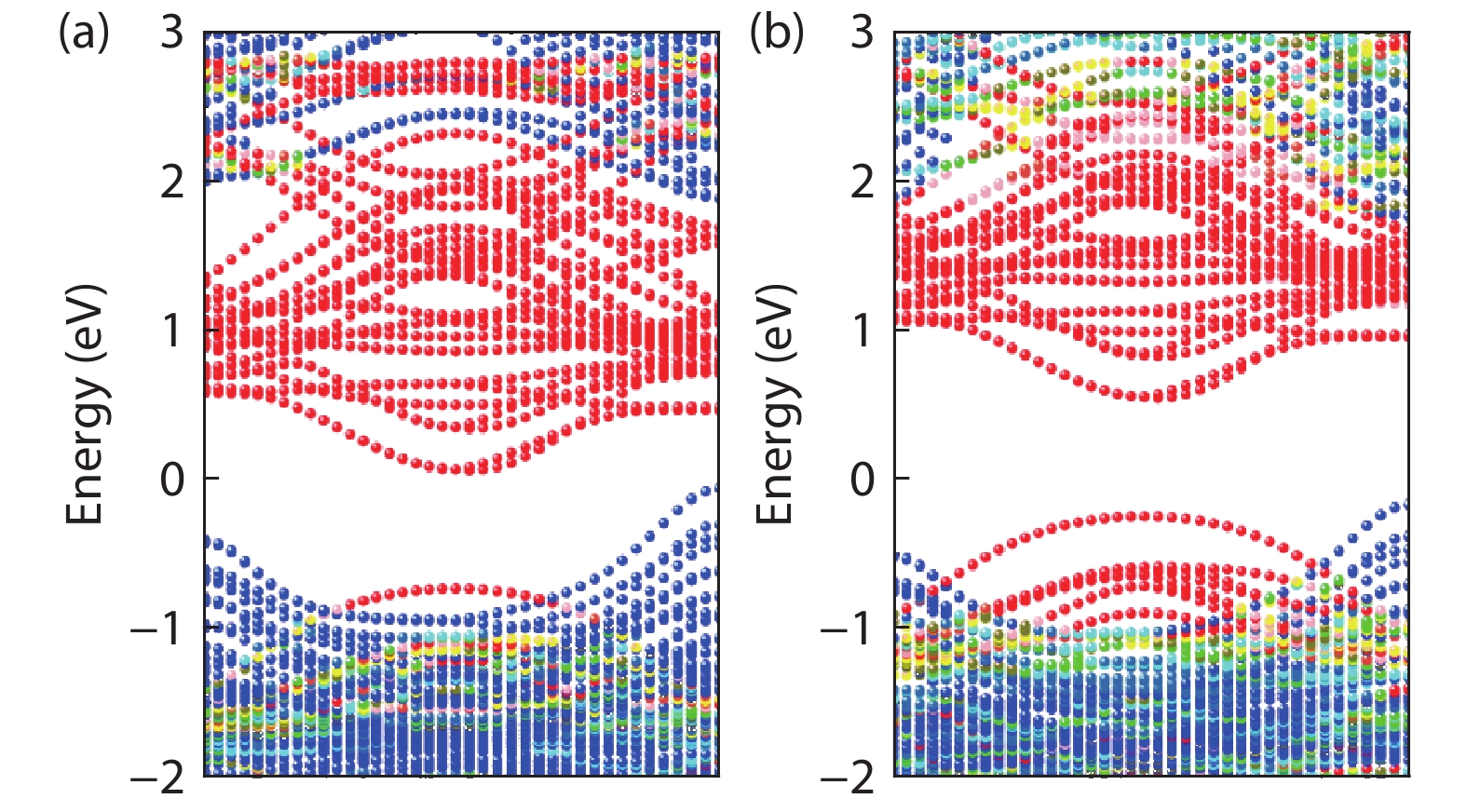| Citation: |
Le Huang, Nengjie Huo, Zhaoqiang Zheng, Huafeng Dong, Jingbo Li. Two-dimensional transition metal dichalcogenides for lead halide perovskites-based photodetectors: band alignment investigation for the case of CsPbBr3/MoSe2[J]. Journal of Semiconductors, 2020, 41(5): 052206. doi: 10.1088/1674-4926/41/5/052206
L Huang, N J Huo, Z Q Zheng, H F Dong, J B Li, Two-dimensional transition metal dichalcogenides for lead halide perovskites-based photodetectors: band alignment investigation for the case of CsPbBr3/MoSe2[J]. J. Semicond., 2020, 41(5): 052206. doi: 10.1088/1674-4926/41/5/052206.
Export: BibTex EndNote
|
Two-dimensional transition metal dichalcogenides for lead halide perovskites-based photodetectors: band alignment investigation for the case of CsPbBr3/MoSe2
doi: 10.1088/1674-4926/41/5/052206
More Information-
Abstract
The distinguished electronic and optical properties of lead halide perovskites (LHPs) make them good candidates for active layer in optoelectronic devices. Integrating LHPs and two-dimensional (2D) transition metal dichalcogenides (TMDs) provides opportunities for achieving increased performance in heterostructured LHPs/TMDs based optoelectronic devices. The electronic structures of LHPs/TMDs heterostructures, such as the band offsets and interfacial interaction, are of fundamental and technological interest. Here CsPbBr3 and MoSe2 are taken as prototypes of LHPs and 2D TMDs to investigate the band alignment and interfacial coupling between them. Our GGA-PBE and HSE06 calculations reveal an intrinsic type-II band alignment between CsPbBr3 and MoSe2. This type-II band alignment suggests that the performance of CsPbBr3-based photodetectors can be improved by incorporating MoSe2 monolayer. Furthermore, the absence of deep defect states at CsPbBr3/MoSe2 interfaces is also beneficial to the better performance of photodetectors based on CsPbBr3/MoSe2 heterostructure. This work not only offers insights into the improved performance of photodetectors based on LHPs/TMDs heterostructures but it also provides guidelines for designing high-efficiency optoelectronic devices based on LHPs/TMDs heterostructures. -
References
[1] Zhang W, Eperon G E, Snaith H J. Metal halide perovskites for energy applications. Nat Energy, 2016, 1, 16048 doi: 10.1038/nenergy.2016.48[2] Stoumpos C C, Kanatzidis M G. Halide perovskites: poor man's high-performance semiconductors. Adv Mater, 2016, 28, 5778 doi: 10.1002/adma.201600265[3] Lin Q, Armin A, Burn P L, et al. Organohalide perovskites for solar energy conversion. Acc Chem Res, 2016, 49, 545 doi: 10.1021/acs.accounts.5b00483[4] Zhao Y, Zhu K. Organic–inorganic hybrid lead halide perovskites for optoelectronic and electronic applications. Chem Soc Rev, 2016, 45, 655 doi: 10.1039/C4CS00458B[5] Chen J, Zhou S, Jin S, et al. Crystal organometal halide perovskites with promising optoelectronic applications. J Mater Chem C, 2016, 4, 11 doi: 10.1039/C5TC03417E[6] Berry J, Buonassisi T, Egger D A, et al. Hybrid organic–inorganic perovskites (HOIPs): Opportunities and challenges. Adv Mater, 2015, 27, 5102 doi: 10.1002/adma.201502294[7] Lee M M, Teuscher J, Miyasaka T, et al. Efficient hybrid solar cells based on meso-superstructured organometal halide perovskites. Science, 2012, 338, 643 doi: 10.1126/science.1228604[8] Stranks S D, Eperon G E, Grancini G, et al. Electron-hole diffusion lengths exceeding 1 micrometer in an organometal trihalide perovskite absorber. Science, 2013, 342, 341 doi: 10.1126/science.1243982[9] Liu D, Kelly T L. The emergence of perovskite solar cells. Nat Photonics, 2014, 8, 133 doi: 10.1038/nphoton.2013.342[10] Jang D M, Park K, Kim D H, et al. Reversible halide exchange reaction of organometal trihalide perovskite colloidal nanocrystals for full-range band gap tuning. Nano Lett, 2015, 15, 5191 doi: 10.1021/acs.nanolett.5b01430[11] Dong R, Fang Y, Chae J, et al. High-gain and low-driving-voltage photodetectors based on organolead triiodide perovskites. Adv Mater, 2015, 27, 1912 doi: 10.1002/adma.201405116[12] Veldhuis S A, Boix P P, Yantara N, et al. Perovskite materials for light-emitting diodes and lasers. Adv Mater, 2016, 28, 6804 doi: 10.1002/adma.201600669[13] Liu M, Johnston M B, Snaith H J. Efficient planar heterojunction perovskite solar cells by vapour deposition. Nature, 2013, 501, 395 doi: 10.1038/nature12509[14] Zhou H, Chen Q, Li G, et al. Interface engineering of highly efficient perovskite solar cells. Science, 2014, 345, 542 doi: 10.1126/science.1254050[15] Mei A, Li X, Liu L, et al. A hole-conductor–free, fully printable mesoscopic perovskite solar cell with high stability. Science, 2014, 345, 295 doi: 10.1126/science.1254763[16] Zuo C, Bolink H J, Han H, et al. Advances in perovskite solar cells. Adv Sci, 2016, 3, 1500324 doi: 10.1002/advs.201500324[17] Lin Q, Armin A, Burn P L, et al. Filterless narrowband visible photodetectors. Nat Photonics, 2015, 9, 687 doi: 10.1038/nphoton.2015.175[18] Fang Y, Dong Q, Shao Y, et al. Highly narrowband perovskite single-crystal photodetectors enabled by surface-charge recombination. Nat Photonics, 2015, 9, 679 doi: 10.1038/nphoton.2015.156[19] Chen S, Teng C, Zhang M, et al. A flexible UV-Vis-NIR photodetector based on a perovskite/conjugated-polymer composite. Adv Mater, 2016, 28, 5969 doi: 10.1002/adma.201600468[20] Zhu H L, Cheng J, Zhang D, et al. Room-temperature solution-processed niox: PbI2 nanocomposite structures for realizing high-performance perovskite photodetectors. ACS Nano, 2016, 10, 6808 doi: 10.1021/acsnano.6b02425[21] Tan Z K, Moghaddam R S, Lai M L, et al. Bright light-emitting diodes based on organometal halide perovskite. Nat Nanotechnol, 2014, 9, 687 doi: 10.1038/nnano.2014.149[22] Cho H, Jeong S H, Park M H, et al. Overcoming the electroluminescence efficiency limitations of perovskite light-emitting diodes. Science, 2015, 350, 1222 doi: 10.1126/science.aad1818[23] Stranks S D, Snaith H J. Metal-halide perovskites for photovoltaic and light-emitting devices. Nat Nanotechnol, 2015, 10, 391 doi: 10.1038/nnano.2015.90[24] Yang J, Siempelkamp B D, Liu D, et al. Investigation of CH3NH3PbI3 degradation rates and mechanisms in controlled humidity environments using in situ techniques. ACS Nano, 2015, 9, 1955 doi: 10.1021/nn506864k[25] Hailegnaw B, Kirmayer S, Edri E, et al. Rain on methylammonium lead iodide based perovskites: possible environmental effects of perovskite solar cells. J Phys Chem Lett, 2015, 6, 1543 doi: 10.1021/acs.jpclett.5b00504[26] Zhang Y Y, Chen S, Xu P, et al. Intrinsic instability of the hybrid halide perovskite semiconductor CH3NH3PbI3. Chin Phys Lett, 2018, 35, 036104 doi: 10.1088/0256-307X/35/3/036104[27] Novoselov K S, Geim A K, Morozov S V, et al. Two-dimensional gas of massless Dirac fermions in graphene. Nature, 2005, 438, 197 doi: 10.1038/nature04233[28] Lee C, Wei X, Kysar J W, et al. Measurement of the elastic properties and intrinsic strength of monolayer graphene. Science, 2008, 321, 385 doi: 10.1126/science.1157996[29] Bonaccorso F, Sun Z, Hasan T, et al. Graphene photonics and optoelectronics. Nat Photonics, 2010, 4, 611 doi: 10.1038/nphoton.2010.186[30] Sun Y, Wu Q, Shi G. Graphene based new energy materials. Energy Environ Sci, 2011, 4, 1113 doi: 10.1039/c0ee00683a[31] Li Y, Xu L, Liu H, et al. Graphdiyne and graphyne: from theoretical predictions to practical construction. Chem Soc Rev, 2014, 43, 2572 doi: 10.1039/c3cs60388a[32] Bonaccorso F, Colombo L, Yu G, et al. Graphene, related two-dimensional crystals, and hybrid systems for energy conversion and storage. Science, 2015, 347, 1246501 doi: 10.1126/science.1246501[33] Song X, Liu X, Yu D, et al. Boosting two-dimensional MoS2/CsPbBr3 photodetectors via enhanced light absorbance and interfacial carrier separation. ACS Appl Mater Interfaces, 2018, 10, 2801 doi: 10.1021/acsami.7b14745[34] Lee Y, Kwon J, Hwang E, et al. High-performance perovskite-graphene hybrid photodetector. Adv Mater, 2015, 27, 41 doi: 10.1002/adma.201402271[35] Wang Y, Fullon R, Acerce M, et al. Solution-processed MoS2/organolead trihalide perovskite photodetectors. Adv Mater, 2017, 29, 1603995 doi: 10.1002/adma.201603995[36] Kang D H, Pae S R, Shim J, et al. An ultrahigh-performance photodetector based on a perovskite-transition-metal-dichalcogenide hybrid structure. Adv Mater, 2016, 28, 7799 doi: 10.1002/adma.201600992[37] Ma C, Shi Y, Hu W, et al. Heterostructured WS2/CH3NH3PbI3 photoconductors with suppressed dark current and enhanced photodetectivity. Adv Mater, 2016, 28, 3683 doi: 10.1002/adma.201600069[38] Schulz P, Edri E, Kirmayer S, et al. Interface energetics in organo-metal halide perovskite-based photovoltaic cells. Energy Environ Sci, 2014, 7, 1377 doi: 10.1039/c4ee00168k[39] Kabra D, Lu L P, Song M H, et al. Efficient single-layer polymer light-emitting diodes. Adv Mater, 2010, 22, 3194 doi: 10.1002/adma.201000317[40] Kormányos A, Zólyomi V, Drummond N D, et al. Spin-orbit coupling, quantum dots, and qubits in monolayer transition metal dichalcogenides. Phys Rev X, 2014, 4, 011034 doi: 10.1103/physrevx.4.011034[41] Yin W J, Yang J H, Kang J, et al. Halide perovskite materials for solar cells: a theoretical review. J Mater Chem A, 2015, 3, 8926 doi: 10.1039/C4TA05033A[42] Blöchl P E. Projector augmented-wave method. Phys Rev B, 1994, 50, 17953 doi: 10.1103/PhysRevB.50.17953[43] Kresse G, Joubert D. From ultrasoft pseudopotentials to the projector augmented-wave method. Phys Rev B, 1991, 59, 1758 doi: 10.1103/PhysRevB.59.1758[44] Kresse G, Furthmüller J. Efficiency of ab-initio total energy calculations for metals and semiconductors using a plane-wave basis set. Comput Mater Sci, 1996, 6, 15 doi: 10.1016/0927-0256(96)00008-0[45] Perdew J P, Wang Y. Density-functional approximation for the correlation energy of the inhomogeneous electron gas. Phys Rev B, 1986, 33, 8800 doi: 10.1103/PhysRevB.33.8800[46] Perdew J P, Burke K, Ernzerhof M. Generalized gradient approximation made simple. Phys Rev Lett, 1996, 77, 3865 doi: 10.1103/PhysRevLett.77.3865[47] Heyd J, Peralta J E, Scuseria G E, et al. Energy band gaps and lattice parameters evaluated with the Heyd-Scuseria-Ernzerhof screened hybrid functional. J Chem Phys, 2005, 123, 174101 doi: 10.1063/1.2085170[48] Heyd J, Scuseria G E, Ernzerhof M. Hybrid functionals based on a screened Coulomb potential. J Chem Phys, 2006, 124, 9906 doi: 10.1063/1.1564060[49] Grimme S, Antony J, Ehrlich S, et al. A consistent and accurate ab initio parametrization of density functional dispersion correction (DFT-D) for the 94 elements H-Pu. J Chem Phys, 2010, 132, 154104 doi: 10.1063/1.3382344[50] Huang L, Huo N, Li Y, et al. Electric-field tunable band offsets in black phosphorus and MoS2 van der Waals pn heterostructure. J Phys Chem Lett, 2015, 6, 2483 doi: 10.1021/acs.jpclett.5b00976[51] Huang L, Tao L, Gong K, et al. Role of defects in enhanced Fermi level pinning at interfaces between metals and transition metal dichalcogenides. Phys Rev B, 2017, 96, 205303 doi: 10.1103/PhysRevB.96.205303[52] Huang L, Zhong M, Deng H X, et al. The Coulomb interaction in van der Waals heterostructures. Sci China: Phys Mech Astron, 2019, 62(3), 37311 doi: 10.1007/s11433-018-9294-4[53] Wei S H, Zunger A. Band offsets and optical bowings of chalcopyrites and Zn-based II–VI alloys. J Appl Phy, 1995, 78, 3846 doi: 10.1063/1.359901[54] Butler K T, Frost J M, Walsh A. Band alignment of the hybrid halide perovskites CH3NH3PbCl3, CH3NH3PbBr3 and CH3NH3PbI3. Mater Horizons, 2015, 2, 228 doi: 10.1039/C4MH00174E[55] Zhu Z Y, Cheng Y C, Schwingenschlögl U. Giant spin-orbit-induced spin splitting in two-dimensional transition-metal dichalcogenide semiconductors. Phys Rev B, 2011, 84, 153402 doi: 10.1103/PhysRevB.84.153402 -
Proportional views





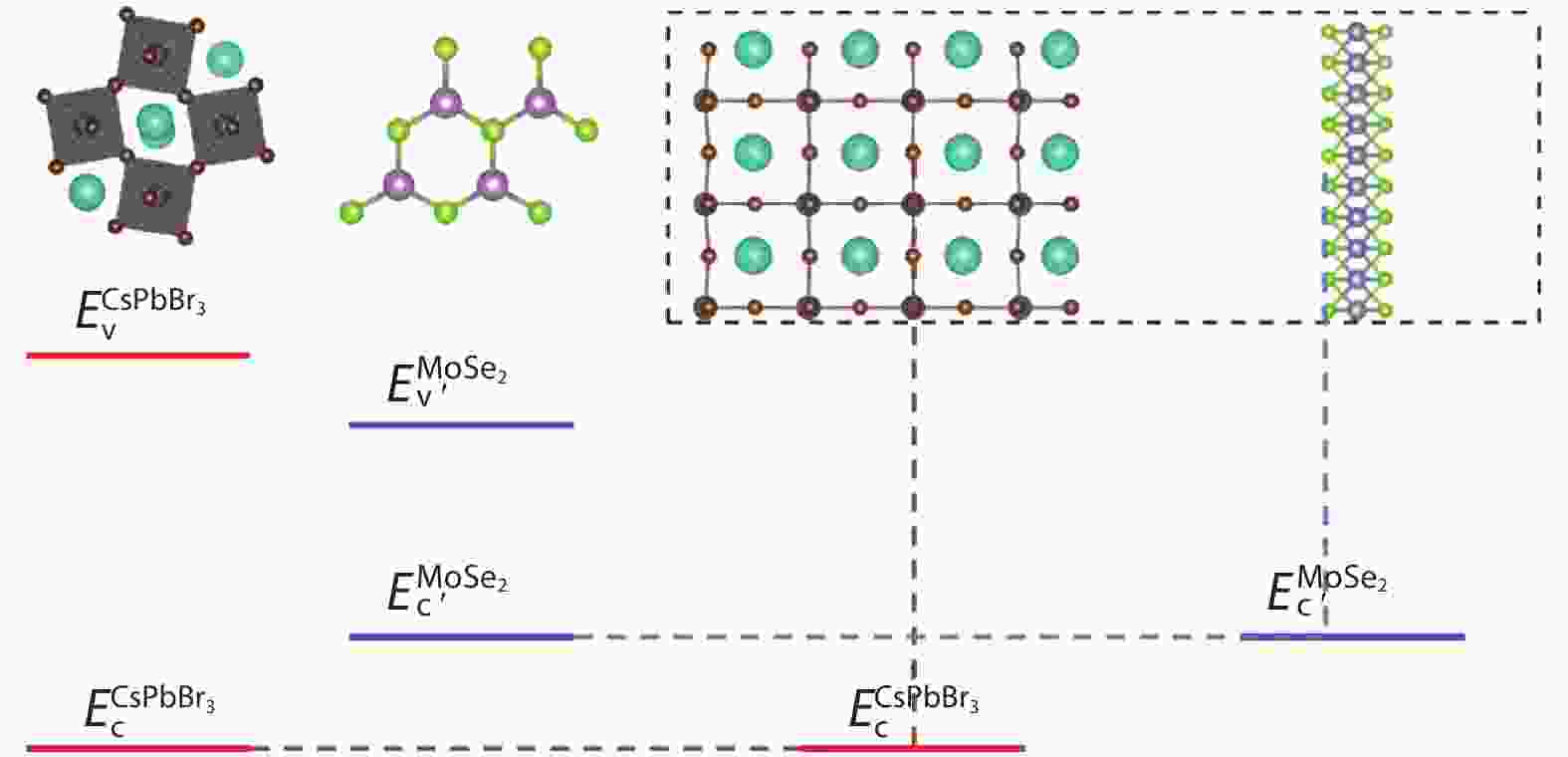
 DownLoad:
DownLoad:
